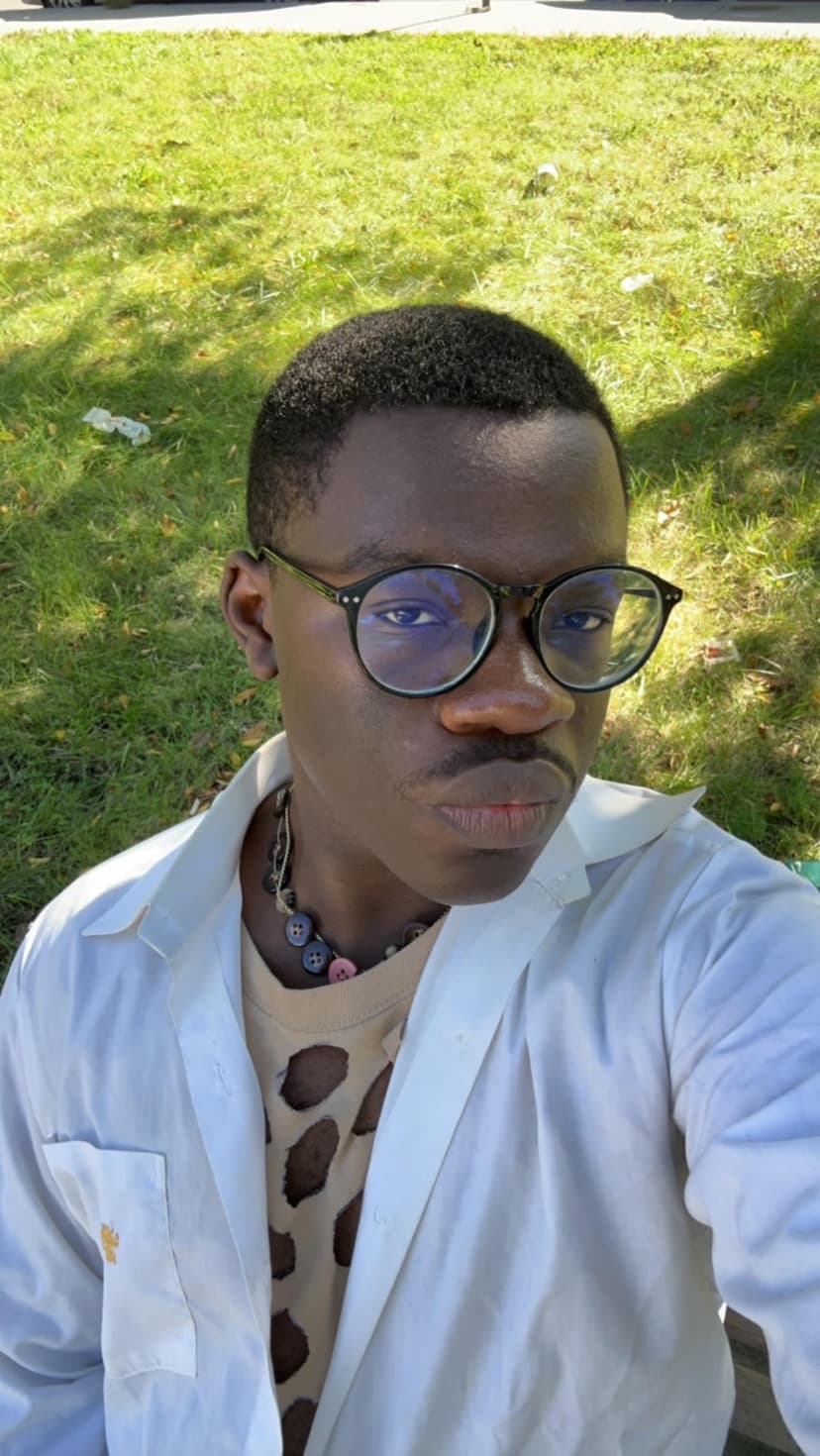“Women Prisoner Polaroids,” on view at Gallery Kayafas through August 10, consists of photos by Jack Lueders-Booth taken entirely in 1980: one year in his decade-long tenure as a photography teacher at MCI Framingham Women’s Prison. When he arrived in the mid-70s, the facility was in the throes of an ongoing effort to lessen the psychological impacts of incarceration. Lueders-Booth’s project, which naturally arose as an extension of his teaching duties, involved taking polaroids of inmates in everyday clothing, often inside cells decorated to look more homey with objects of their choosing.
Online• Aug 06, 2024
At Gallery Kayafas, Photography that Captures the Agency of the Incarcerated
In “Women Prisoner Polaroids,” Jack Lueders-Booth’s 1980’s portraits of incarcerated women employ personal artifacts and depictions of friendship to highlight the often overlooked roles of connection and care within prisons.
Quick Bit by Erwin Kamuene
The exhibition “Women Prisoner Polaroids,” on view at Gallery Kayafas through August 10, is accompanied by an art book of the same name that captures photos of incarcerated women taken by Jack Lueders-Booth in 1980. Photo courtesy of STANLEY/BARKER.

The exhibition “Women Prisoner Polaroids,” on view at Gallery Kayafas through August 10, is accompanied by an art book of the same name that captures photos of incarcerated women taken by Jack Lueders-Booth in 1980. Photo courtesy of STANLEY/BARKER.

Untitled, Women Prisoner Polaroids, MCI Framingham, 1980. Polacolor II Print. 4″ x 5″. Image courtesy of the gallery.

As many of these subjects were students of Lueders-Booth and thereby photographers themselves, these portraits were equal exercises in performed self-image as they were attempts at destigmatization. In one photo (all photos are untitled), a young woman wearing a white tank top and sporting tapered eyebrows cradles a biography of Mick Jagger, establishing herself as first and foremost a devotee of the artist. In another, a woman positioned in an odalisque pose with her doe-like eyes feigning shock appears as a beauty queen at ease amidst the splashes of pink and mauve adorning her room. Another image shows a pregnant woman lassoing her arms about her baby bump. The prison’s procedure at the time for expecting mothers was to allot them a measly five days with their babies before shipping the children off to foster homes or into the care of the mothers’ relatives. It’s this fleeting normalcy, one that’s punctured by its own ephemeralness, that lends these images their humanity, like wounds momentarily cauterized.

Untitled, Women Prisoner Polaroids, MCI Framingham, 1980. Polacolor II Print. 4″ x 5″. Image courtesy of the gallery.
Despite many attempts to veil the fact, all portraits in this exhibition are haunted by their carceral setting: often brickwork is peeking from beneath a drape, and sometimes one finds the sparse backdrop of a caged window or dusky interior. However, the pictures are anything but presumptuous. Instead of voyeuristically intruding upon his subjects, Lueders-Booth is a collaborator fleshing out the world that these women and (some) men wanted to depict. The anonymous interviews printed in the art book released in tandem to the show—also titled Women Prisoner Polaroids—give an inkling of the proximity inmates had to these images. Some were recreations of better times before, others were longings for a better time yet to come, and some were sparse portraits of them as they were before, but all are nonetheless sanctuaries. The exhibition proudly displays all of these relations, which with its lack of titles and wall text, give these Polaroids the agency to speak for themselves. I personally found myself gravitating toward portraits with the subjects embracing. My favorite of these depicts two casually dressed inmates interlocking fingers and embracing one another’s body in the crooks of their free arms. The taller one stands in contrapposto, drooping over the other’s shoulder, and there’s a tenderness in the way she’s held up, her co-conspirator careful not to use her sweater as an ashtray. The intimacy displayed here and elsewhere in the exhibition chafes against a singular view of these images as signifying an absence from the lives of these prisoners. These images also pay homage to what they did have, which more often than not was each other, and if not that, themselves.
“Women Prisoner Polaroids” is on view at Gallery Kayafas through August 10, 2024.
